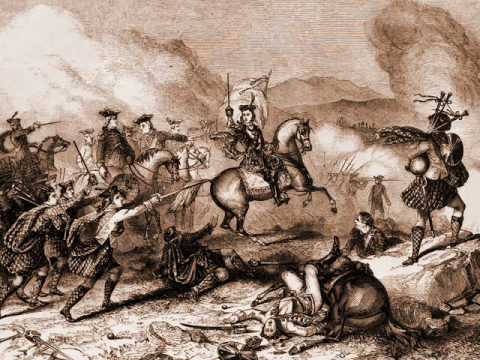History of the Stewarts | Battles and Historic Events
If you are a Stewart Society Member please login above to view all of the items in this section. If you want general information on how to research your ancestors and some helpful links - please look in background information.
If you have a specific question you can contact our archivist.

The Williamite troops inflicted a crushing defeat upon the Jacobite forces, and they would subsequently disperse. Although James’ Irish campaign was to continue for another year, the Jacobites in Scotland were unable to mount another major campaign of resistance until 1715.
Following James VII & II leaving England (and being held therefore to have abdicated) and the arrival of William of Orange during what is known as the Glorious Revolution of 1688, the exiled King’s supporters in Scotland rose under John Graham of Claverhouse, otherwise known as Bonnie Dundee by his supporters or as Bloody Clavers, by those with Covenanter sympathies who had suffered at his hands during the ‘Killing Time’ of the 1680s.
Over the winter of 1689 and the early months of 1690, the Jacobite army lost many men to desertion as it moved throughout northern Scotland, plundering civilian resources. At the beginning of the spring campaign in April, General Thomas Buchan replaced Cannon as commander of what remained of the Jacobite force.
The army was largely a Highland one, comprised of soldiers from the clans MacDonland, MacLean, Cameron, MacPherson and the Invermoriston Grants. Buchan led 1500 of these Highlanders into Strathspey, where they encamped at an exposed position on the Haughs of Cromdale. The Laird of Grant, a strong supporter of William and who was displeased that what he saw as rebel soldiers harassed his lands and were quartered in plain sight of Castle Grant, sent for Sir Thomas Livingston, the commander of the garrison at Inverness. The Williamite force arrived in the area on 28 April. Under the cover of darkness in the early hours of 1 May, Livingston’s force attacked the Jacobite encampment. The surprised Jacobites were very quickly overwhelmed and fled into the mist of the early morning hours, leaving several hundred of their force dead on the field.
The Williamite force had crossed the Spey at the ford downstream from Cromdale Kirk in the early hours of the morning, their advance shielded by darkness and tree cover. An attack on the kirk may have served as a diversion for the crossing, drawing the Jacobite guards away from the ford to support others at the church . The Jacobite army was spread out guarding three fords, one up stream from the church, one directly opposite and one down stream. A further garrison, commanded by Buchan’s nephew, was at Lethendry Castle on the western slope of Lethendry hill, An attempt was made to rally a defence - by the MacLeans - but ultimately the Jacobites were able to inflict little damage, other than cutting down some of the Williamite horses.
The Battle of Cromdale destroyed the Scottish Jacobite army, which had already been seriously weakened by the loss of Viscount Dundee. One month later, the Stuart cause was dealt another blow with the defeat of James VII’s forces at the Battle of the Boyne in Ireland, and the last vestiges of Jacobite resistance suffered final defeat in 1691 at Aughrim. The dispersal of the Highland forces at Cromdale effectively ended the campaign of resistance against the new regime of William III on the British mainland and it would be over two decades until another serious challenged was mounted.
The battle is remembered in a ballad popular throughout the eighteenth and nineteenth centuries. Prints and reprints of The Haughs of Cromdale are widely available in numerous archives as well as collected editions of Scottish ballads, such as Hogg’s Jacobite Relics. The ballad tells the tale of the surprise attack on the Jacobites and their defeat, but oddly mixes up the 1690 battle with the earlier 1645 battle of Auldearn, fought between Montrose and a Covenanter army – a battle
in which a Highland force was victorious.
The last verse reads: -
The loyal Stewarts, with Montrose,
So boldly set upon their foes,
And brought them down with Highland blows
Upon the Haughs of Cromdale.
Of twenty-thousand Cromwell´s men,
Five-hundred fled to Aberdeen,
The rest of them lie on the plain,
Upon the Haughs of Cromdale
Reference: The Killing time BBC

